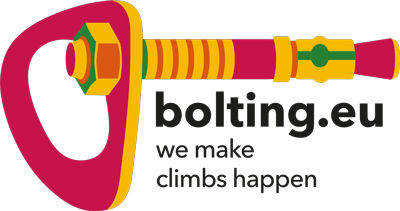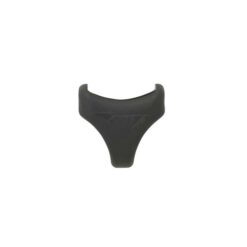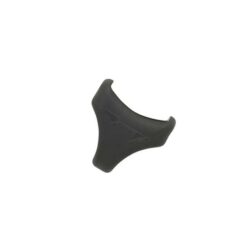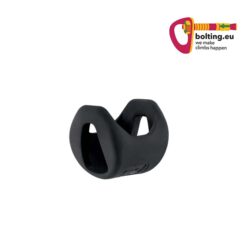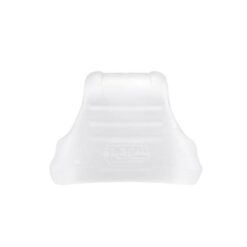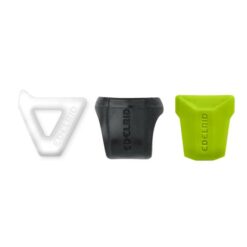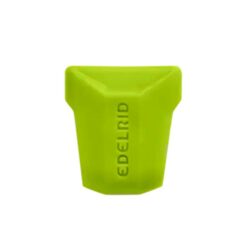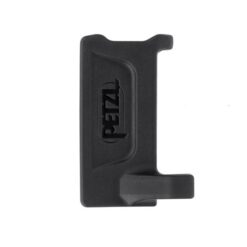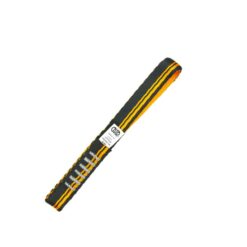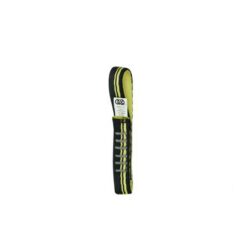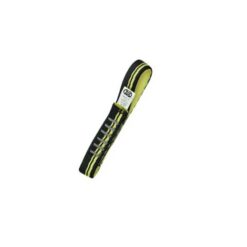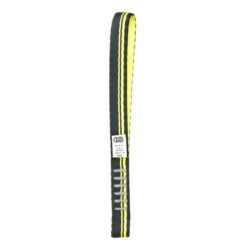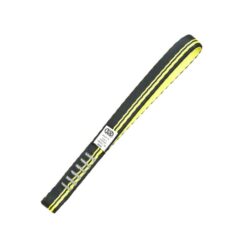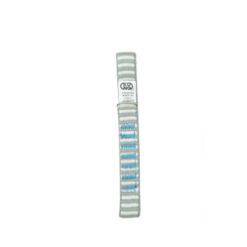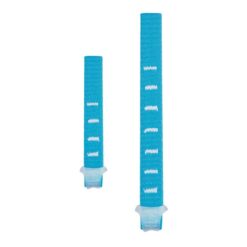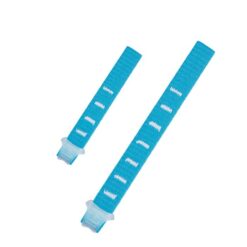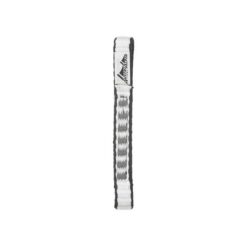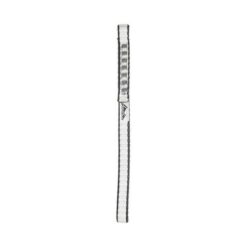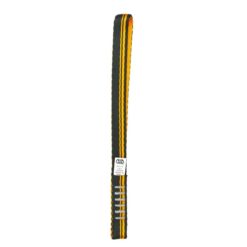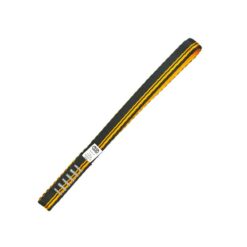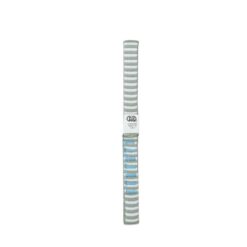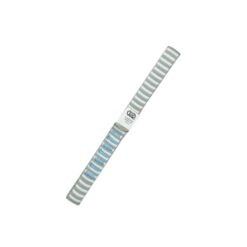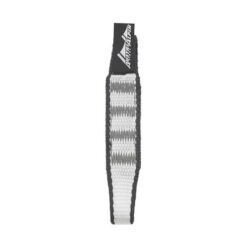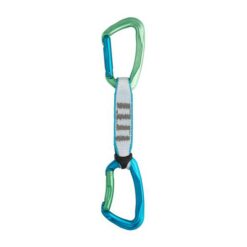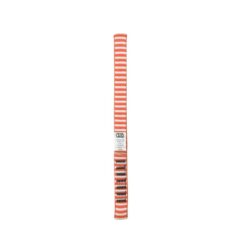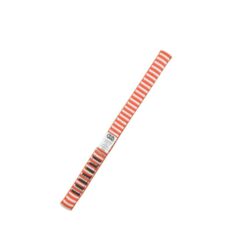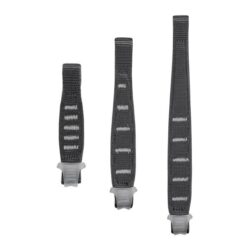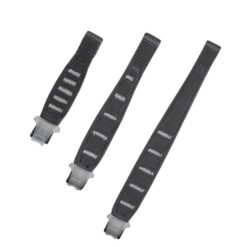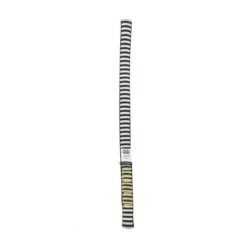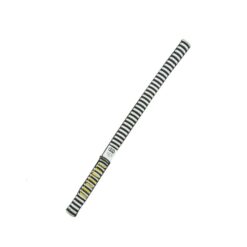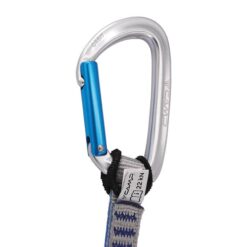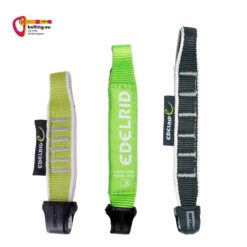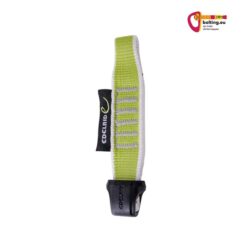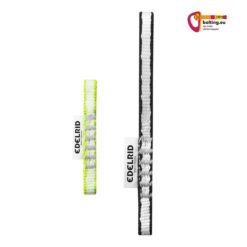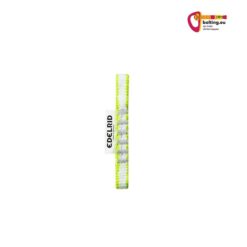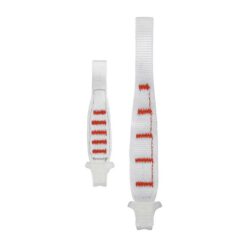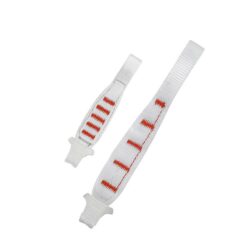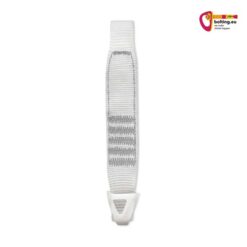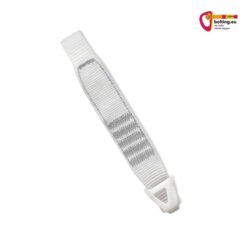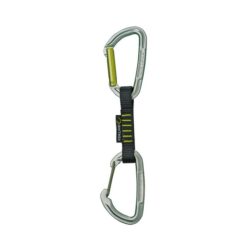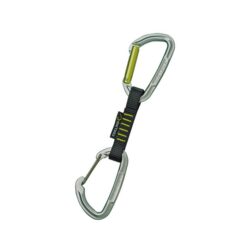incl. 20% VAT
incl. 20% VAT
incl. 20% VAT
incl. 20% VAT
Quickdraws are a basic component of any climbing equipment. They are often simply referred to as “quickdraws” or the synonym “climbing quickdraws” is often used.
How quickdraws work
Quickdraws work according to a very specific principle. On the one hand, the sling is “loosely” hooked into the carabiner on the side of the rock. This means that the sling is movable on this side. On the other hand, the carabiner on the side of the rope is usually “rigidly” fixed in the quickdraw. An additional plastic fixation part is usually used for this purpose.
The extendable alpine slings are an exception. Here, both carabiners are usually loosely attached to the 60 cm long sling.
The important thing is:
the carabiner on the side of the rock will develop sharp bones over time – only ever attach this side to the bolt hanger or glue in bolt!
the carabiner on the side of the rope should always have a smooth surface; if necessary, it should be replaced if it is badly worn
Carabiner types determine weight!
The weight of quickdraws depends on the type of carabiner. This is important to know. This is the only way to select the right quickdraws for your intended use.
Firstly, there are the ultra-light carabiners. These are usually very small carabiners. Consequently, their weight is also minimal. The Camp Nano, for example, weighs just 22 grams and the 20cm Express only 58 grams. These slings are mainly used for alpine climbing.
On the other hand, there are the lightweight carabiners. They are already somewhat more stable and are therefore often used for sport climbing. The Camp Photon gate, for example, weighs a light 36 grams, the 11cm quickdraw 82 grams.
Lightweight carabiners with wire gate are usually another 2-4 grams lighter.
Then come the “normal” carabiners. I.e. standard carabiners with a weight of around 45-55 grams. Such a “climbing Exe” comes to around 100-110 grams in total.
In short: if you have an average of 14 quickdraws when sport climbing, you can easily save around 350 grams of weight by using lightweight carabiners!
Express slings types
Quickdraws are usually available in three lengths. Firstly,“short” quickdraws around 12 cm for sport climbing. Secondly, “long” slings around 20cm as a supplement for climbing areas or alpine climbing. And thirdly, “extendable” quickdraws around 60cm.
Comparison of the three common quickdraw lengths.
How many quickdraws in the climbing equipment?
The number of quickdraws naturally depends on your climbing habits. There are no fixed rules. That’s why we’ve put together a brief overview of our recommendations for you here.
It is important to note here. Firstly, you don’t have to start with the specified number of quickdraws. A look at the (sport climbing) route should help you to determine the required number and type of quickdraws.
And secondly, you simply need some experience. Over time, you will soon find out your preferred set-up for alpine routes, for example.
Recommended number of quickdraws
Climbing focus
short (11-14cm)
long (16-22cm)
extendable (60cm)
sporadic sport climbing
10
4
2
lots of sport climbing
14
6
4
sporadic alpine
10
4
4
regularly alpine
8
6
6
Special shapes quickdraws
There are a few special forms of “climbing exes”. Firstly, there are the “stiff” slings with which you can hook in from a greater distance, such as the Kong Panic Express.
Another Kong patent is the Frog quickdraw. The advantage here is that the carabiner on the side of the rock closes immediately when clipped in. This special express shape is therefore ideal if you want to clip very quickly at a very specific point.
There are also fixed indoor quickdraws in climbing gyms. Here, a fixed chain link / rapid link is attached instead of the carabiner on the side of the rock. This type of quickdraw can also be found more and more often in the outdoor sector as so-called “fixed” express slings. This type of sling is now also available with steel cable instead of the polyamide / Dyneema sling.
Finally, we would like to introduce you to the quickdraws for ice screws. The smart system allows you to attach this type of sling to any ice screw with a diameter of up to 20 mm.
There are some special shapes for quickdraws!
Quickdraw maintenance
Over the course of time, expresses simply get dirty all by themselves. This is because dust and tiny grains of sand accumulate in the snapper joints. As a result, the catches can sometimes no longer close properly. Time to service your exersaucers!
wash your quickdraws with lukewarm water
allow them to air dry properly(never use a hairdryer or a radiator!!!)
lubricate the gate joints with a special oil for carabiners
Move the catches several times to distribute the oil well in the joint
Wipe with a cleaning cloth – done!
